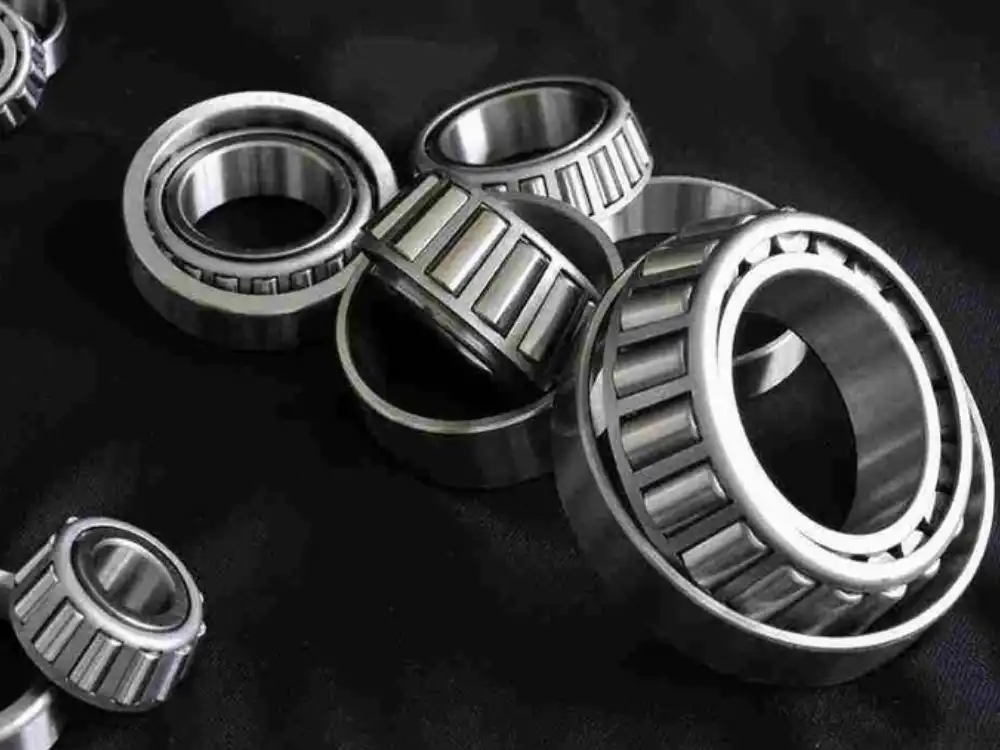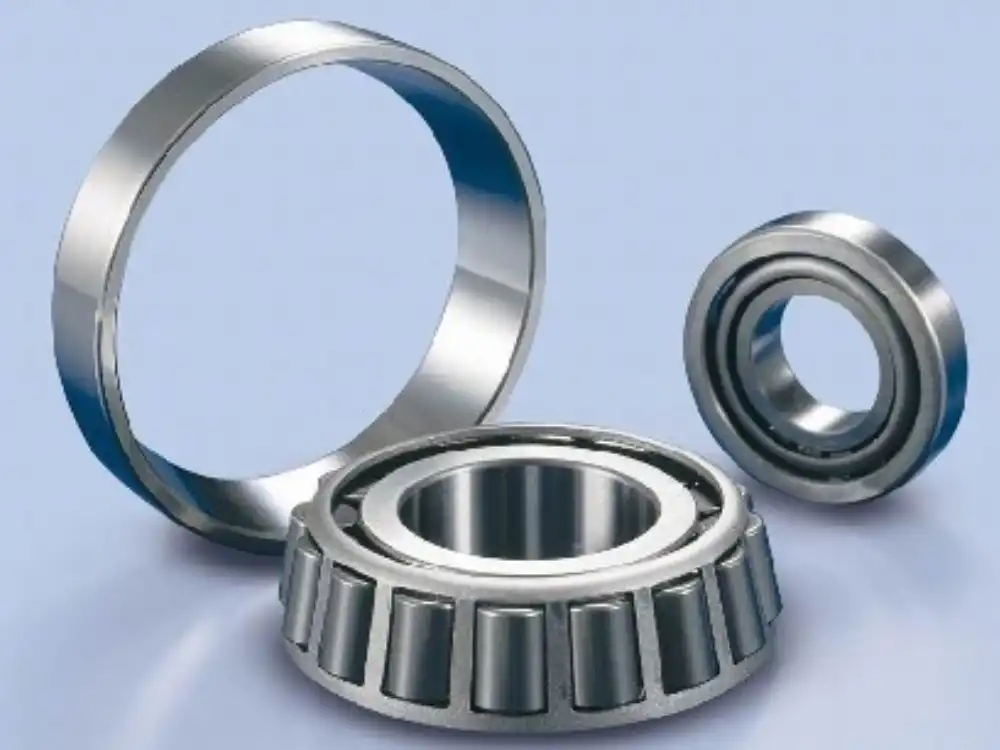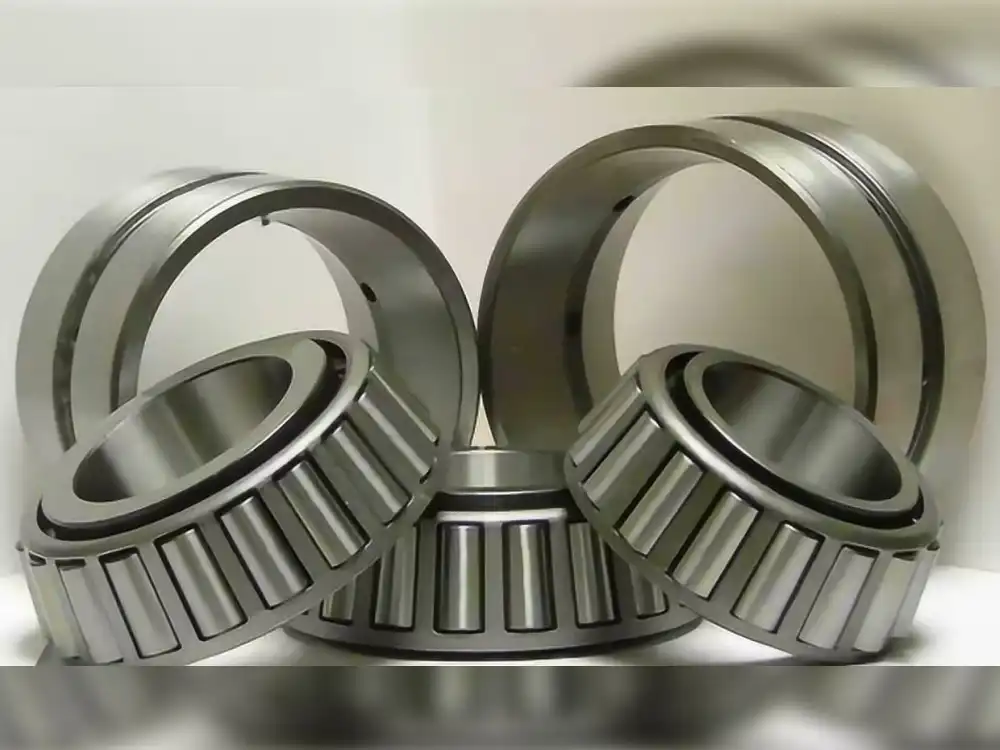How Do You Maintain Conical Roller Bearings?
Conical roller bearings are critical components in many industrial applications, designed to handle both radial and axial loads simultaneously. Their unique tapered design allows them to support heavy loads while maintaining precision in machinery operations. Proper maintenance of these bearings is essential for ensuring optimal performance, preventing premature failure, and extending the service life of your equipment.
What are the signs of conical roller bearing failure?

Early Warning Indicators
Recognizing the early signs of conical roller bearing deterioration can save substantial repair costs. Unusual noise is often the first indicator of potential problems. Conical roller bearings typically operate with minimal noise, so any grinding, clicking, or rumbling sounds warrant immediate attention. The specific sound can help identify the nature of the problem—clicking might indicate a damaged roller, while grinding could suggest contamination or inadequate lubrication. Vibration analysis can detect issues before they become audible. Conical roller bearings experiencing wear, misalignment, or damage will produce distinct vibration patterns. Temperature abnormalities also serve as reliable indicators, as bearings operating above their normal temperature range suggest excessive friction due to lubrication issues, overloading, or internal damage.
Visual Inspection Techniques
Visual examination remains one of the most practical methods for assessing conical roller bearing condition. Look for signs of discoloration, which often indicates overheating or chemical contamination. Examine the rollers and raceways for pitting, spalling, or scoring marks, as these surface defects impact the bearing's performance. The presence of flaking—where small pieces of metal detach from the bearing surface—indicates fatigue failure. Cage damage is another critical indicator, as the cage maintains proper roller spacing within the conical roller bearing assembly. Bent, broken, or worn cages can lead to roller misalignment. Additionally, check for signs of corrosion or rust, which compromise both structural integrity and smooth operation of conical roller bearings.
Performance Degradation Symptoms
Operational performance changes often reveal conical roller bearing issues. Reduced rotational accuracy manifests as uneven movement, wobbling, or runout in shafts. This precision loss impacts the quality of manufactured parts or the efficiency of power transmission. Increased power consumption represents another key indicator—when bearings develop issues, they create additional resistance that requires more energy to overcome. Load capacity reduction also signals bearing deterioration, where equipment previously handling specific loads begins to struggle or overheat. This symptom is particularly concerning in conical roller bearing applications, as these components are designed to handle heavy combined loads.
How do you properly lubricate conical roller bearings?

Selecting the Appropriate Lubricant
Choosing the right lubricant for conical roller bearings requires consideration of several factors. Operating temperature range stands as critical, as the lubricant must maintain appropriate viscosity across all temperatures the bearing will experience. Premium mineral oils generally perform well between -20°C and 100°C, while synthetic oils can handle more extreme conditions. Load characteristics also influence lubricant selection, with heavier loads requiring higher viscosity oils or greases with EP additives to maintain the critical oil film between the conical rollers and raceways. Environmental factors present another consideration—food processing applications require food-grade lubricants, while wet environments might necessitate water-resistant formulations. For conical roller bearings operating at high speeds, lower viscosity lubricants reduce heat generation, while slower applications with heavy loads benefit from higher viscosity options.
Lubrication Methods and Frequency
The method of applying lubricant to conical roller bearings significantly impacts their performance. Manual lubrication allows for visual inspection during maintenance and remains suitable for many applications. When using this method, ensure the bearing is clean before applying new grease and avoid over-packing. Automatic lubrication systems offer more consistent results by delivering small, frequent doses of lubricant. These systems are valuable for conical roller bearings in hard-to-reach locations or continuous operation environments. Oil bath methods, where the conical roller bearing partially dips into an oil reservoir during rotation, provide excellent lubrication for specific applications but require careful oil level monitoring. Establishing appropriate relubrication frequencies based on operating conditions is essential—high-speed, high-temperature, or contaminated environments may require more frequent lubrication than standard recommendations.
Common Lubrication Mistakes
Even well-intentioned maintenance practices can damage conical roller bearings. Overgreasing ranks among the most common errors, creating excess pressure within sealed bearings that can damage seals and generate heat that accelerates lubricant degradation. Conversely, underlubrication leaves conical roller bearings without adequate protection, resulting in metal-to-metal contact and rapid wear. Mixing incompatible lubricants presents another serious risk, as chemical reactions between different grease thickeners or base oils can destroy lubricating properties. Contamination during the lubrication process, often from using dirty equipment, introduces abrasive particles directly into the bearing. These particles can reduce conical roller bearing life significantly. Finally, ignoring lubricant shelf-life leads to using degraded products with diminished protective capabilities.

What is the proper cleaning procedure for conical roller bearings?
Pre-Cleaning Assessment
Before cleaning, evaluate the condition of the conical roller bearing to determine the appropriate approach. Document the bearing's original position and orientation, particularly noting the relationship between inner and outer rings, as this information will be crucial during reassembly. Inspect for visible damage such as cracks or significant deformation that might render the bearing unsuitable for continued service. Examine the lubricant condition, as discolored or contaminated lubricant provides valuable diagnostic information about operating conditions. Dark oxidized lubricant suggests overheating, while lubricant containing metal particles indicates active wear within the conical roller bearing assembly. The presence and type of contaminants will inform your selection of cleaning methods. Pay attention to the condition of seals or shields if present, as damaged sealing components will allow rapid recontamination of the conical roller bearing once returned to service.
Step-by-Step Cleaning Process
The proper cleaning sequence for conical roller bearings involves several carefully executed steps. Begin by removing external dirt using compressed air or a clean cloth, being careful not to push contaminants deeper into the assembly. For conical roller bearings with removable components, carefully disassemble the unit, keeping all parts organized. The main cleaning typically involves immersion in an appropriate petroleum-based solvent that effectively dissolves grease while being compatible with bearing materials. Agitate the conical roller bearing gently, using a soft brush to reach between rollers and cage components, but never spin the dry bearing. For stubborn deposits, ultrasonic cleaning provides exceptional results by using high-frequency sound waves to create bubbles that dislodge contaminants. After the primary cleaning, rinse the bearing in fresh solution to remove any loosened contaminants. Immediately following cleaning, thoroughly dry the bearing using clean compressed air, directing the airflow around all components while manually rotating the bearing to ensure complete moisture removal.
Post-Cleaning Protection Measures
After cleaning, conical roller bearings require immediate protection to prevent corrosion. Apply a light coating of appropriate oil or grease immediately after drying, ensuring complete coverage of all surfaces. This initial lubrication film protects against flash rusting and provides minimal lubrication for handling. For extended storage periods, consider specialized rust-preventive compounds formulated for bearing protection. Proper packaging plays a critical role in maintaining cleanliness—wrap conical roller bearings in oil-proof, lint-free paper and seal in polyethylene bags to create a barrier against humidity. Avoid standard plastic wraps that can trap moisture. Store cleaned bearings in a controlled environment with stable temperature and low humidity, away from vibration sources. Implement proper inventory management practices for cleaned conical roller bearings, using a first-in, first-out approach. Before installation, conduct a final inspection to verify the bearing remains clean, as even minor contamination can significantly reduce the service life of precision conical roller bearings.
Conclusion
Proper maintenance of conical roller bearings requires vigilance in monitoring warning signs, implementing appropriate lubrication practices, and following thorough cleaning procedures. By understanding the early indicators of bearing failure, selecting the right lubricants, and performing regular maintenance, you can significantly extend bearing life and reduce equipment downtime. Remember that preventive maintenance is always more cost-effective than reactive repairs, especially when dealing with critical components like conical roller bearings that impact overall system performance.
Luoyang Huigong Bearing Technology Co., Ltd. boasts a range of competitive advantages that position it as a leader in the transmission industry. Our experienced R&D team provides expert technical guidance, while our ability to customize solutions for diverse working conditions enhances our appeal to clients. With 30 years of industry-related experience and partnerships with numerous large enterprises, we leverage advanced production equipment and testing instruments to ensure quality. Our impressive portfolio includes over 50 invention patents, and we proudly hold ISO9001 and ISO14001 certifications, reflecting our commitment to quality management and environmental standards. Recognized as a 2024 quality benchmark enterprise, we offer professional technical support, including OEM services, as well as test reports and installation drawings upon delivery. Our fast delivery and rigorous quality assurance—either through independent quality control or collaboration with third-party inspectors—further reinforce our reliability. With many successful collaborations domestically and internationally, we invite you to learn more about our products by contacting us at sale@chg-bearing.com or calling our hotline at +86-0379-65793878.
References
1. Harris, T.A. and Kotzalas, M.N. (2023). "Essential Concepts of Bearing Technology: Rolling Bearing Analysis." CRC Press, 6th Edition.
2. SKF Group (2024). "Bearing Maintenance Handbook: Principles and Guidelines for Proper Lubrication and Handling." SKF Publications.
3. Neale, M.J. (2022). "The Tribology Handbook: A Comprehensive Guide to Bearing Maintenance and Failure Analysis." Butterworth-Heinemann.
4. ISO 15243:2023. "Rolling bearings — Damage and failures — Terms, characteristics and causes." International Organization for Standardization.
5. Timken Company (2023). "Tapered Roller Bearing Maintenance Guide: Installation, Lubrication, and Troubleshooting." Timken Technical Publications.
6. Barden Corporation (2024). "Precision Bearing Cleaning and Handling Procedures for Industrial Applications." Schaeffler Group Publishing.

